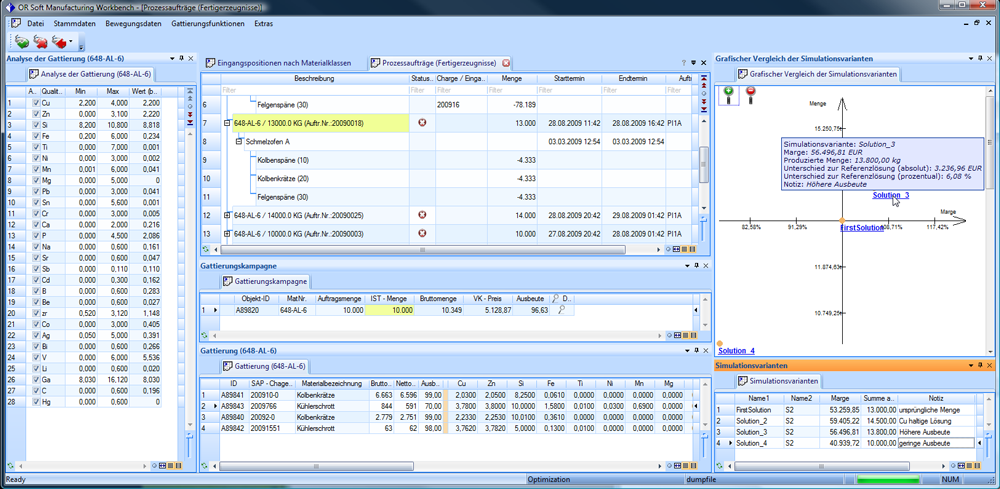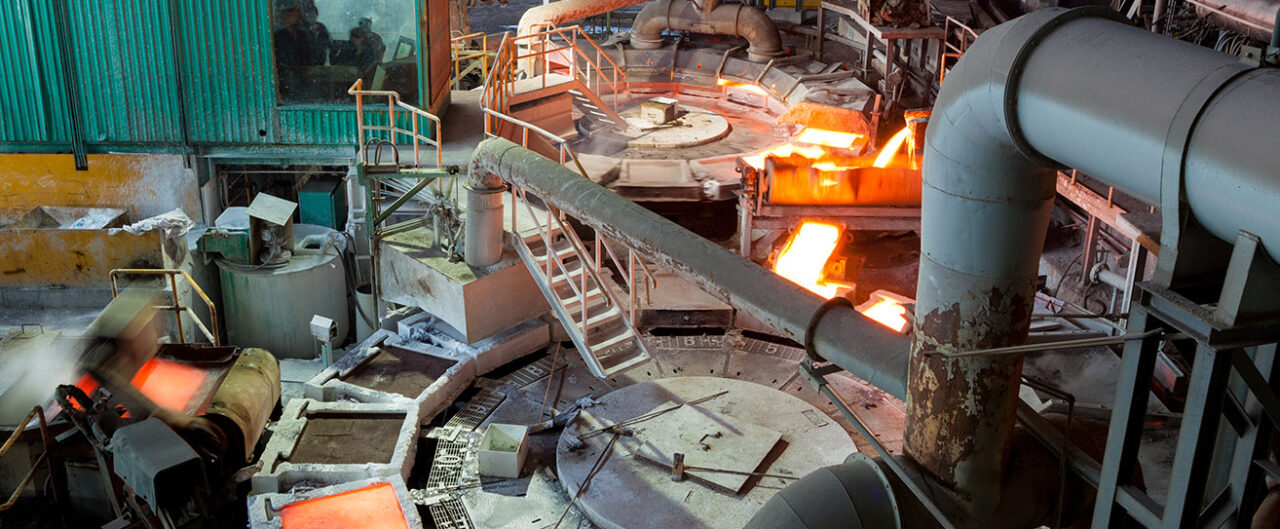Production planning in the metal producing industry / foundries

Production planning and scheduling in the metal production industry is characterized by a high grade of specific requirements. There are several specialized Advanced Planning and Scheduling (APS) Systems available, which assist the planner in resolving certain tasks. For example, support can be provided for the production of secondary metal or the detailed production planning of foundries. These solutions are mostly stand-alone systems that cannot be integrated in the company’s ERP system due to the separate database used. Hence, redundant data management is required.
ORSOFT Manufacturing Workbench fills this gap. Based on the master and dynamic data of SAP ERP or, SAP ECC accordingly, this solution proposes a set of specialized APS solution modules which are of particular interest for the metal production industry.
ORSOFT Manufacturing Workbench is a software solution for detailed production planning and is certified by SAP. This software product offers the following functions:
- Resource allocation planning for furnaces
- Consider all related resources and their availability, including handling units and other tools used in production
- Consideration of dynamic set up costs
- Burden calculation on homogeneous raw materials
- Calculation of Bill of Materials (BOM) to a certain finished product (or customer specification) by minimizing the raw material costs
- Consideration of other constraints (thresholds, limitation of BOM items, etc.)
- Support make-to-stock production and make-to-order production
- Consideration of productions tools, such as molds, in foundries
Burden Calculation
The central task of the burden calculator is to assign an optimal bill of material to a process order or production order, taking the quality constraints of the finished product into consideration. Here, a set of important constraints must be met. One finished product can be produced using a range of different bills of material (different recipes). Planning personnel needs the capability to compare these variants; this calculation can be based on a linear optimization algorithm.
The burden calculation is a set of production orders the planner could consider as different constraints. The adherence includes the allowable quality parameter range, which is the most important one, the consideration of thresholds, the limitation of BOM items count, and the limitation of raw material quantities. ORSOFT Manufacturing Workbench provides the possibility to compare different solutions in both tabular and graphical displays. The planner will receive a lot of information related to the calculated solutions and can then make an objective choice.

Comparison of Different Compositions
Cast Allocation
When producing casting molds, optimal cast planning is required. When there are mold orders, whether the order is from one or multiple customers, it is essential to select the most optimal combination of casts in order to reduce over production and byproducts, while simultaneously considering the delivery dates.
ORSOFT Manufacturing Workbench for SAP ERP assists the main task of cast planning: to optimally assign the sequence and combination of molds (see picture below). A production plan has to be generated that satisfies all customer orders and exploits the capacity of the resources (foundry, furnace, cast, smelt, etc.) in the most optimal way.
Groups of molds are sequenced; each mold consists of several sections. How many sections will be used and which sections the mold will fit is determined in advance. To generate an optimal production plan, the solution uses a linear optimization algorithm to minimize overproduction.

Detailed Production Scheduling
Metals are produced by melting raw materials in a furnace. After quality is checked with various parameters, the blend is forwarded to the foundry where the finished products are formed or the liquid metal is filled into transportation containers. The last process step is the distribution to the customer. Either way, availability of transportation and handling equipment already has to be considered during production scheduling. Additionally, set-up cost, cleaning cycles, cooling times or other restrictions must be considered immediately if original recipes are modified.
Resource Allocation
ORSOFT Manufacturing Workbench allows resource allocation via Gantt-Charts. Histograms that indicate material consumption can be added to the Gantt chart row, representing the resource.
Managing Production Tools
ORSOFT Manufacturing Workbench provides a view that displays the status of all production tools (e.g. molds, handling units, etc.). Conflicts occurring from invalid scheduling are indicated in a chronological order.
